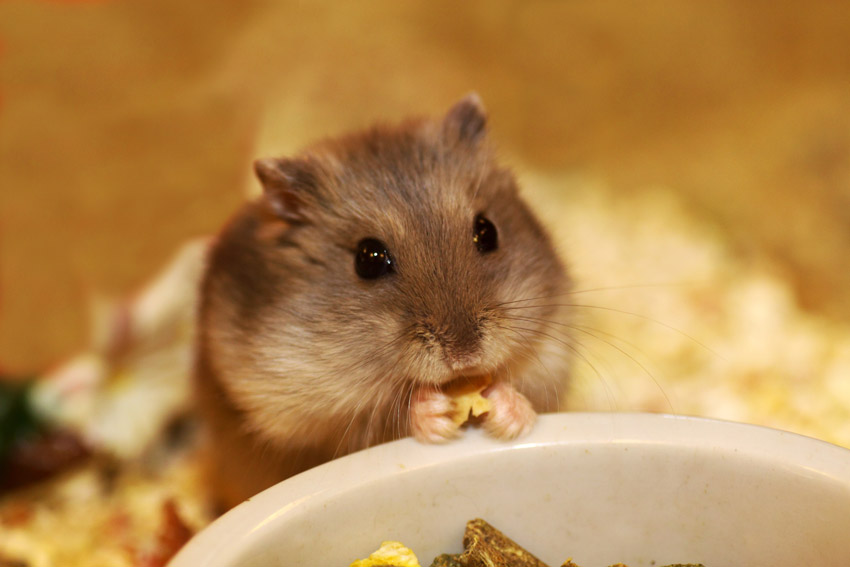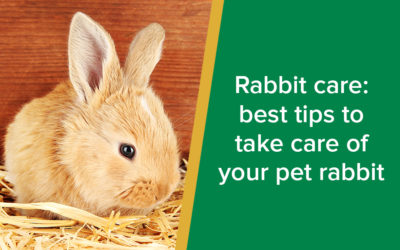Hamsters are short tailed nocturnal small rodents originally from desert environments. There are several types seen as pets – Syrian (Golden), and the dwarf breeds Chinese (striped), Campbells’s, Winter White and Roborovski. The Syrian is the largest and most popular and makes a friendly inquisitive pet if well handled. Syrians and Chinese need to be kept singly to prevent fighting. Campbell’s and Winter Whites are Russian Dwarf hamsters. They can be kept in pairs or groups of the same sex. Roborovski hamsters are the smallest type of hamster, they live in small groups and are extremely active. Most hamsters live for 2-3 years.

Hamster cage
- Hamster housing should be as big as possible to allow them to exercise freely, and have plenty space for climbing, nesting and hiding. At least 60cm x 30cm base and 30cm high, but this will depend on numbers and sizes of hamsters. The cage should have a solid floor with deep bedding like dust-free wood shavings to allow the hamster’s natural burrowing behaviour.
- Hamsters love to chew so the cage must be robust and secure enough to prevent escapes! Remember that hamsters are nocturnal and will be most active overnight and sleep during the day. Because of this, their housing should be kept in a quieter part of the house in a warm, draught-free area.
- You can customise your hamster’s cage with tubes, tunnels, nest boxes (with paper towel bedding), ladders and wheels. They love to run about, and providing them with toys and different levels is really rewarding – for them and you! Wheels, if used, should be as wide as possible, and solid not spoked to prevent injury. As prey species, they always need areas to hide, like cardboard boxes.
- The cage should be cleaned regularly – at least weekly.
Do not stress your hamster
- Obviously no cats or dogs should be allowed near as this will be very stressful to your hamster. It is also best to keep their housing away from computers and TVs, because they are very sensitive to high frequency sounds.
- If several hamsters (eg dwarves) are kept together it is really important to monitor their behaviour for bullying or fighting.
- Although hamsters are often regarded as a child’s pet, it is worth remembering that they can bite, and in the case of the dwarves, can move very fast. Small children should always be supervised, and hamsters need to be handled in a gentle and quiet way. Daily play and handling will make them more rewarding pets, as well as being much less stressful for the hamster.
Hamster diet
- Hamsters should be allowed unrestricted access to fresh water and fed a commercial hamster food. Muesli style diets can lead to selective feeding where they will only eat for example the seeds – this can lead to obesity or deficiencies.
- They can be messy with food as they like to hide it around the cage, as well as in their cheek pouches. You can also give them a small amount of greens or carrot/apple.
- Their front teeth grow throughout their lives and can be prone to overgrowing if they are not gnawing enough – you can offer them untreated fruit wood to gnaw on.
Remember that as prey species, hamsters tend to hide signs of illness, so watch for any changes in activity, appetite, droppings or normal behaviour that might indicate pain.


